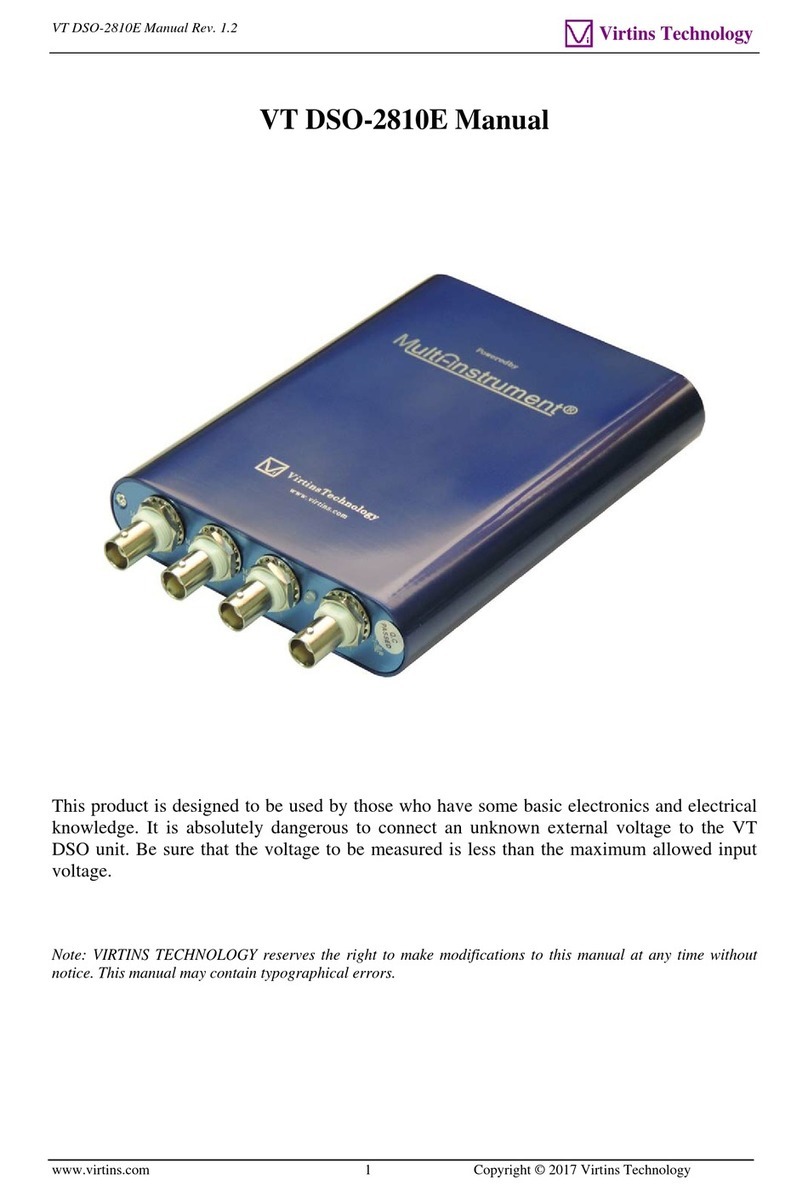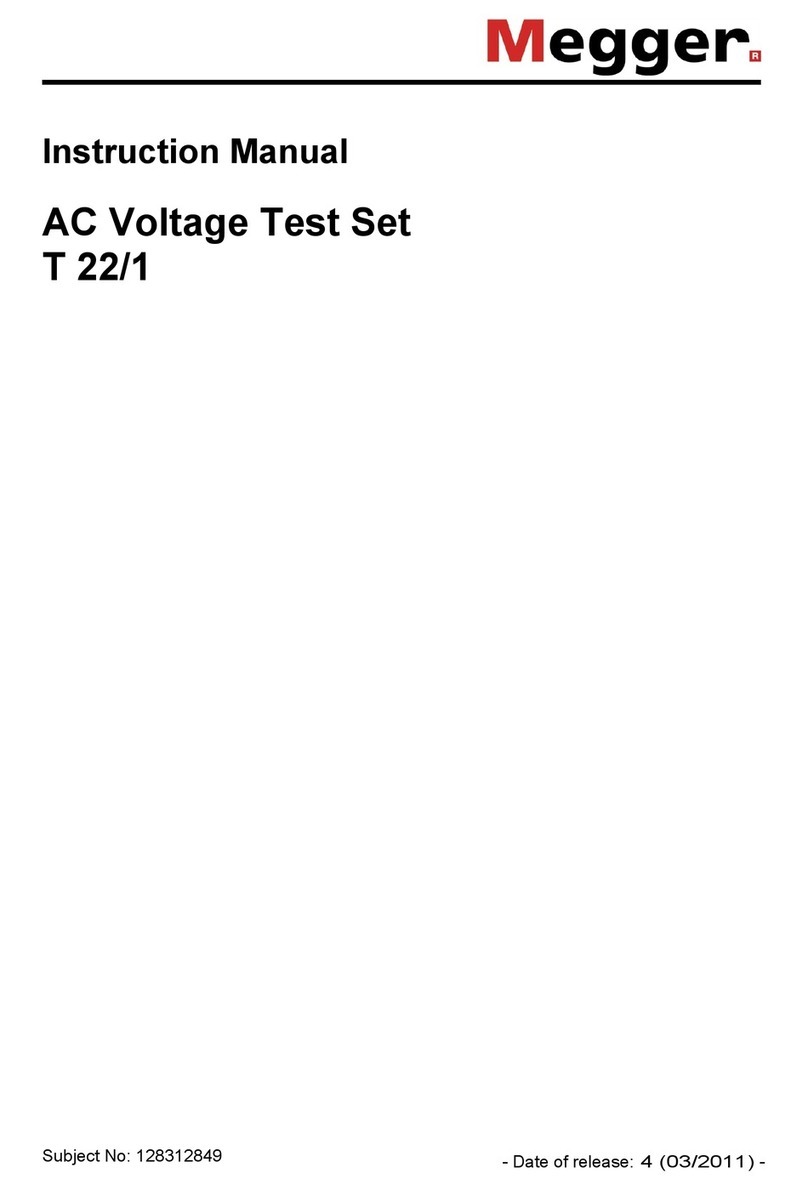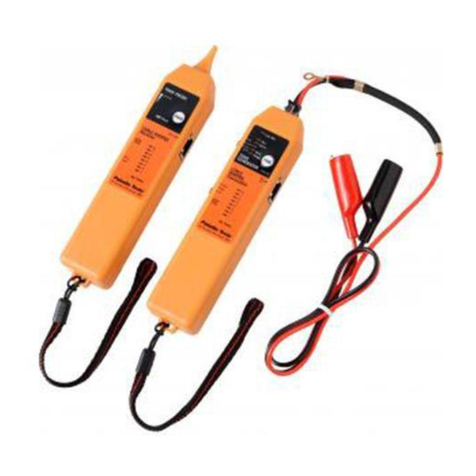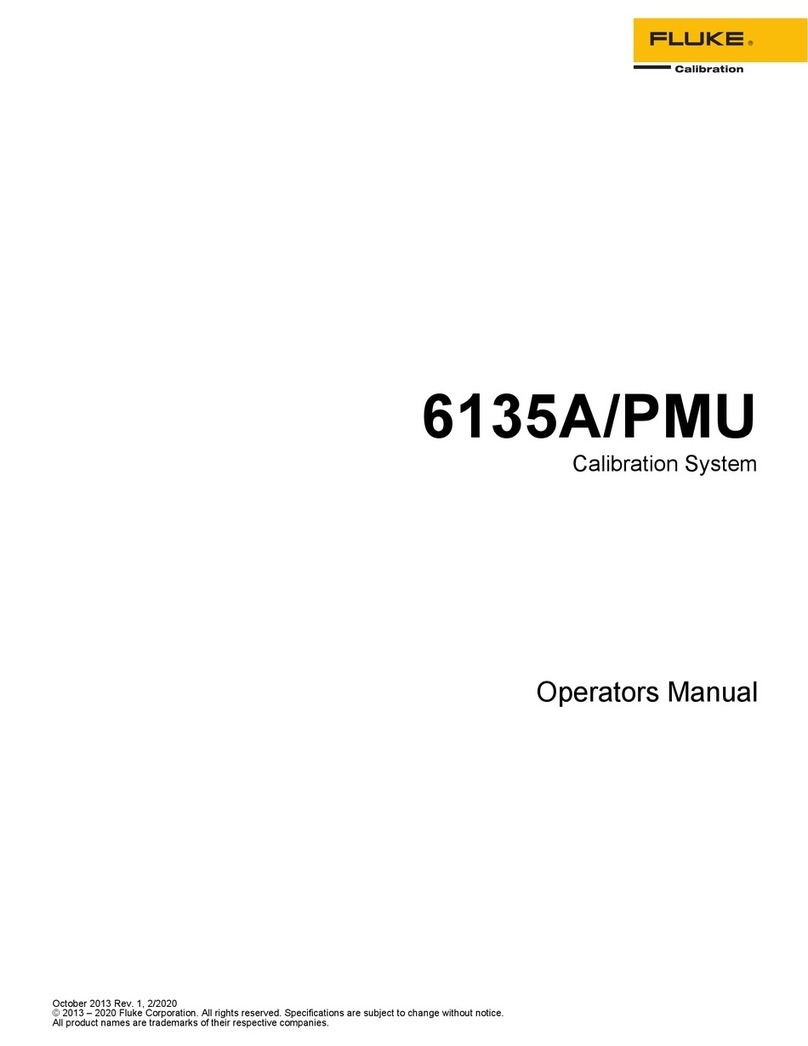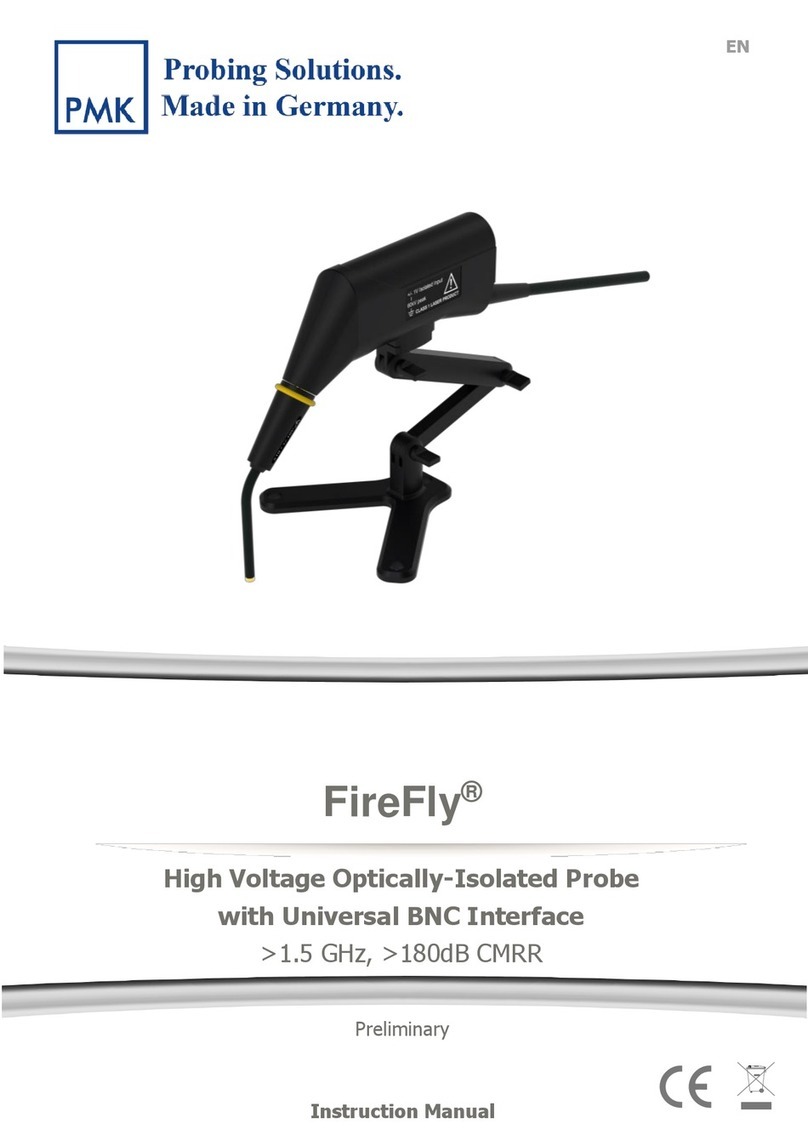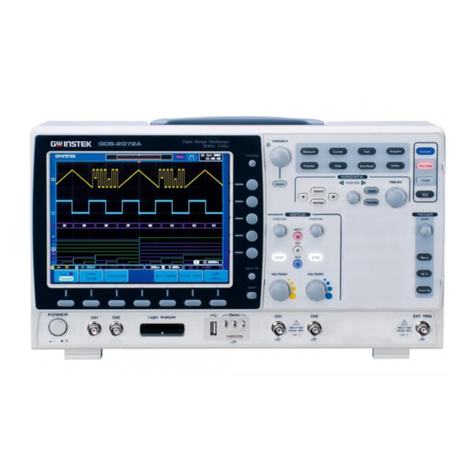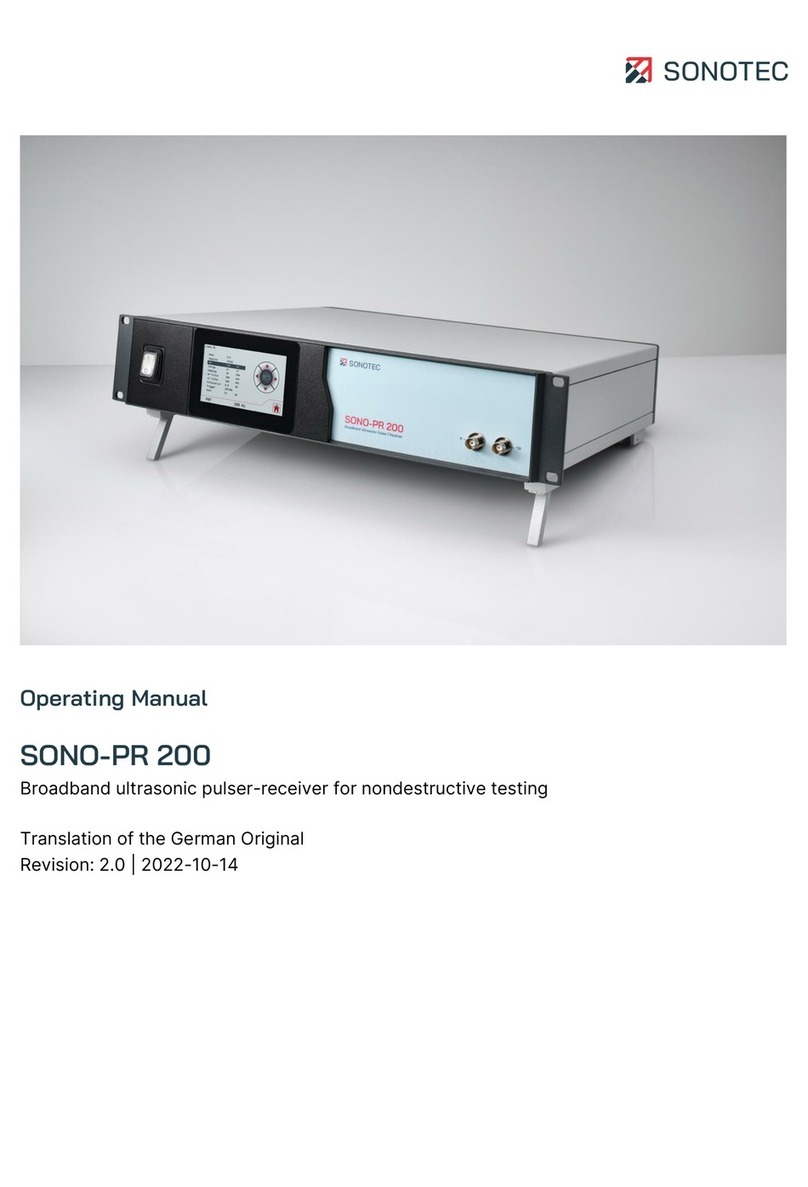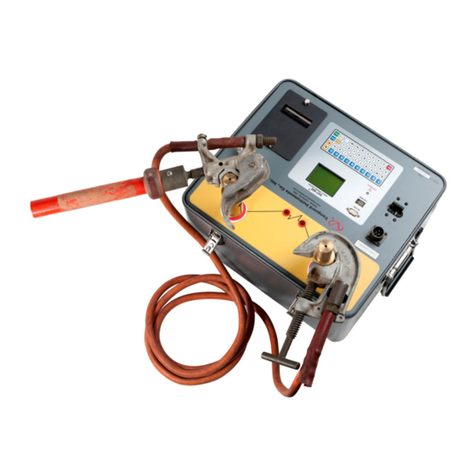Envitec AlcoQuant 6020 User manual

AlcoQuant® 6020
Breathalyser
Operating instructions

2
AlcoQuant® 6020 – Breathalyser – Operating Instructions

3
AlcoQuant® 6020 – Breathalyser – Operating Instructions
Operating instructions
Operating instructionsOperating instructions
Operating instructions
Breathalyser AlcoQuant® 6020
These instructions have been prepared with the utmost care. If, however, you should find details that
are not consistent when handling the system, please send us a brief comment to enable us to rectify
the inconsistencies.
This is subject to modifications owing to further optical or technical developments that contrast to
the data and illustrations contained in these operating instructions.
All trademarks quoted in the te t and reproduced are trademarks of the respective proprietor and
are acknowledged to be protected.
Reprints, translations and duplication in any form – including e cerpts – require the written
permission of the manufacturer.
This manual is subject to the alteration service of EnviteC- Wismar GmbH.
Doc. no.: 059
Doc. no.: 059Doc. no.: 059
Doc. no.: 059-
--
-07
0707
07-
--
-21000300
2100030021000300
21000300-
--
-h
hh
h
© 200
© 200© 200
© 2006
66
6 Envite
Envite Envite
EnviteC
CC
C-
--
- Wismar GmbH
Wismar GmbH Wismar GmbH
Wismar GmbH
(Printed in Germany)
EnviteC- Wismar GmbH Tel.: +49 - (0) 3841-360-1
Alter Holzhafen 18 Fa : +49 - (0) 3841-360-222
23966 Wismar email: info@envitec.com
Internet: www.envitec.com

4
AlcoQuant® 6020 – Breathalyser – Operating Instructions
CONTENTS
1
11
1
GENERAL SAFETY AND S
GENERAL SAFETY AND SGENERAL SAFETY AND S
GENERAL SAFETY AND SERVICE NOTES
ERVICE NOTESERVICE NOTES
ERVICE NOTES ............................................................................................... 5
2
22
2
DESCRIPTION OF DEVIC
DESCRIPTION OF DEVICDESCRIPTION OF DEVIC
DESCRIPTION OF DEVICE AND FUNCTIO
E AND FUNCTIOE AND FUNCTIO
E AND FUNCTIONS
NSNS
NS ......................................................................................... 6
3
33
3
APPLICATIONS AND PUR
APPLICATIONS AND PURAPPLICATIONS AND PUR
APPLICATIONS AND PURPOSE
POSEPOSE
POSE ............................................................................................................ 7
4
44
4
CONTROLS AND SYMBOLS
CONTROLS AND SYMBOLSCONTROLS AND SYMBOLS
CONTROLS AND SYMBOLS ................................................................................................................. 7
4.1
THE DEVICE..................................................................................................................................... 7
4.2
SYMBOLS ON THE ALCOQUANT® 6020.................................................................................................... 8
5
55
5
PREPARING FOR OPERAT
PREPARING FOR OPERATPREPARING FOR OPERAT
PREPARING FOR OPERATION
IONION
ION .............................................................................................................. 8
5.1
HOW TO PREPARE NEW DEVICES............................................................................................................. 8
5.2
HOW TO PREPARE USED DEVICES............................................................................................................ 8
6
66
6
HOW TO MEASURE IN TH
HOW TO MEASURE IN THHOW TO MEASURE IN TH
HOW TO MEASURE IN THE ACTIVE OPERATING M
E ACTIVE OPERATING ME ACTIVE OPERATING M
E ACTIVE OPERATING MODE
ODEODE
ODE ......................................................................... 9
6.1
HOW TO SWITCH ON THE ALCOQUANT® 6020........................................................................................... 9
6.2
HOW TO PERFORM AN ACTIVE BREATHALYSATION PROCESS ON A TEST PERSON .................................................... 10
6.2.1
Test person: requirements
.................................................................................................... 10
6.2.2
Measuring
.......................................................................................................................... 10
6.2.3
Printing of measurement values
........................................................................................... 12
6.2.4
Further measurements
........................................................................................................ 12
6.3
HOW TO SWITCH OFF THE ALCOQUANT® 6020........................................................................................ 12
6.4
POSSIBLE ERRORS IN THE CASE OF ACTIVE MEASUREMENT ............................................................................. 13
6.4.1
Blow failure
........................................................................................................................ 13
6.4.2
Flat battery
......................................................................................................................... 13
7
77
7
THE DATA MEMORY OF T
THE DATA MEMORY OF TTHE DATA MEMORY OF T
THE DATA MEMORY OF THE ALCOQUANT® 6020
HE ALCOQUANT® 6020HE ALCOQUANT® 6020
HE ALCOQUANT® 6020............................................................................... 14
7.1.1
Data memory overflow
........................................................................................................ 14
8
88
8
AUXILIARY FUNCTIONS
AUXILIARY FUNCTIONS AUXILIARY FUNCTIONS
AUXILIARY FUNCTIONS MENU
MENUMENU
MENU .......................................................................................................... 15
8.1
PASSIVE MEASUREMENT MODE ............................................................................................................ 17
8.2
LAST MEASURED VALUES ................................................................................................................... 19
8.3
SETTINGS ..................................................................................................................................... 20
8.3.1
Time
.................................................................................................................................. 20
8.3.2
Contrast
............................................................................................................................. 21
8.3.3
Units
.................................................................................................................................. 22
8.3.4
Key tone
............................................................................................................................. 23
8.3.5
Languages
......................................................................................................................... 23
8.4
HOUR COUNTER ............................................................................................................................. 24
9
99
9
DEVICE CARE/CLEANING
DEVICE CARE/CLEANINGDEVICE CARE/CLEANING
DEVICE CARE/CLEANING INSTRUCTIONS
INSTRUCTIONS INSTRUCTIONS
INSTRUCTIONS ........................................................................................... 25
9.1
GENERAL CARE INSTRUCTIONS............................................................................................................. 25
9.2
ELECTRICAL CONTACTS ..................................................................................................................... 25
9.3
BATTERY CHANGE ........................................................................................................................... 25
9.3.1
Battery charge indicator
....................................................................................................... 25
9.3.2
How to change the batteries
................................................................................................ 26
10
1010
10
CALIBRATION AND MAIN
CALIBRATION AND MAINCALIBRATION AND MAIN
CALIBRATION AND MAINTENANCE
TENANCETENANCE
TENANCE ................................................................................................... 27
11
1111
11
ERROR DESCR
ERROR DESCRERROR DESCR
ERROR DESCRIPTION AND RECTIFICA
IPTION AND RECTIFICAIPTION AND RECTIFICA
IPTION AND RECTIFICATION
TIONTION
TION ........................................................................................ 28
12
1212
12
TECHNICAL SPECIFICAT
TECHNICAL SPECIFICATTECHNICAL SPECIFICAT
TECHNICAL SPECIFICATIONS
IONSIONS
IONS ............................................................................................................ 31
13
1313
13
ORDER INFORMATION
ORDER INFORMATIONORDER INFORMATION
ORDER INFORMATION ...................................................................................................................... 33
14
1414
14
WARRANTY
WARRANTYWARRANTY
WARRANTY ...................................................................................................................................... 35

5
AlcoQuant® 6020 – Breathalyser – Operating Instructions
1
11
1General Safety and Service Notes
General Safety and Service NotesGeneral Safety and Service Notes
General Safety and Service Notes
The law governing operational equipment (law governing technical safety) specifies that
attention must be drawn to the following:
Please heed the operational instructions!
Please heed the operational instructions!Please heed the operational instructions!
Please heed the operational instructions!
Handling the device requires e act knowledge of these operating instructions and their
observance. The device is intended for the application described only.
This symbol means: WARNING.
Warnings are indicated by the WARNING symbol shown on the left.
This symbol means: ATTENTION
Attentions alert the user to the care required for the AlcoQuant® 6020 to be safe and efficient.
Maintenance
Calibration and maintenance must be performed by authorised e perts at si -monthly
intervals (concluding in a report). It is recommended that a service contract should be
concluded with an authorised service company. Maintenance work must be carried out on
the device by authorised service personnel only. Only original parts from Evitec-Wismar
GmbH may be used for repairs. Regarding this, please heed Section 10 “Calibration and
Maintenance”.
Si -monthly calibration of the device is necessary to guarantee the specified measuring
accuracy (see specifications) over the entire period.
Do not operate in e plosion hazardous areas!
Do not operate in e plosion hazardous areas!Do not operate in e plosion hazardous areas!
Do not operate in e plosion hazardous areas!
The device is not licensed for operation in e plosion hazardous areas.
Environment:
Defective devices and empty batteries or accumulators should not be disposed of with
domestic waste. They must be disposed of in accordance with the relevant national or
regional regulations.
The electrochemical sensor used in the device contains hazardous substances and must be
disposed of as stipulated in the EC directive 91/55/EEC.

6
AlcoQuant® 6020 – Breathalyser – Operating Instructions
2
22
2Description of device and functions
Description of device and functionsDescription of device and functions
Description of device and functions
The AlcoQuant® 6020 is a modern breathalyser for determining the alcohol level in the
e piration air (lung air). State-of-the-art technologies for the prevention of faulty
measurements and to ensure ma imum measuring precision are implemented in the device.
To achieve this, the following functions and components are constantly controlled.
•Device temperature
•Sample collection
•Signal generator
•LEDs
•Battery
•Alcohol sensor
•internal memory
•Calibration intervals
These are checked prior to measuring by means of an integrated micro-controller block and
the relevant analysis software.
The AlcoQuant® 6020 contains a special electrochemica
electrochemicaelectrochemica
electrochemical sensor
l sensorl sensor
l sensor, which reacts only to
alcohol. The unique characteristic of this sensor is its specific reaction to alcohol as well as its
long-term stability, facilitating a 6-monthly calibration interval. The influence of other
substances that may be contained in the e piration air, such as acetone, eucalyptol, carbon
dio ide, carbon mono ide (smokers) etc. is negligible owing to the electrochemical
measuring principle applied.
The sample collection system, which has been developed for ma imum precision, makes
short measuring intervals possible, thus facilitating e tremely short waiting periods between
measurements. Thanks to the use of the new, improved ethanol sensor E 100 and the
innovative sample collection system, a high degree of reproducibility of measuring results is
guaranteed.
While a person is blowing into it, the device controls and determines the quantity of e pired
air. This ensures that the sensor receives only deep lung air which reflects the blood alcohol
content correctly.
Another special feature of the AlcoQuant® 6020 is the short time required for it to become
operational.
The intuitive operation of the AlcoQuant® 6020 is menu-controlled by means of three keys.All
displays, device status and error messages appear in clear te t on the illuminated graphic
display. This makes the device self-e planatory and this in turn means that the user is
informed of the current status of the device at all times during operation. This dispenses with
the trouble of looking up and searching for the relevant error codes in the operating
instructions.
The device is equipped with data memory and a serial PC interface. This makes it possible to
printout and transfer measured data which can also be analysed statistically at a later time.
The PC interface also enables the user to perform the entire maintenance, calibration and the
device settings via a convenient PC program. Great store was set on e tremely simple and
user-friendly handling.

7
AlcoQuant® 6020 – Breathalyser – Operating Instructions
3
33
3Applications and purpose
Applications and purposeApplications and purpose
Applications and purpose
The AlcoQuant® 6020 has been developed for the fast and accurate determination of the
alcohol level in a person’s breath. Hence it is optimally suited for routine police checks.
4
44
4Controls and symbols
Controls and symbolsControls and symbols
Controls and symbols
4.1
4.14.1
4.1 The device
The deviceThe device
The device
Fig. 1: Fro
Fig. 1: FroFig. 1: Fro
Fig. 1: Front view and rear view
nt view and rear viewnt view and rear view
nt view and rear view
No.
Assignment
1 ON/OFF keys
2 Select key
3 OK key
4 Display
5 RS 232 interface
6 Red LED: Error signal
7 Yellow LED: Measurement in progress / Attention
8 Green LED: Ready for measuring
9 Mouthpiece port
10 Battery compartment lid
11 Battery compartment opener
12 Device label
13 E piration aperture
7
4
3
1
2
5
8
6
9
12
11
10
13

8
AlcoQuant® 6020 – Breathalyser – Operating Instructions
4.2
4.24.2
4.2 Symbols on the
Symbols on the Symbols on the
Symbols on the AlcoQuant® 6020
AlcoQuant® 6020AlcoQuant® 6020
AlcoQuant® 6020
Symbol
Description
Heed the operating instructions!
Date of manufacture
PN
Product number
SN
Serial number
Observe disposal regulations!
5
55
5Preparing for operation
Preparing for operationPreparing for operation
Preparing for operation
5.1
5.15.1
5.1 How to prepare new devices
How to prepare new devicesHow to prepare new devices
How to prepare new devices
The AlcoQuant® 6020 is installed, equipped and calibrated according to the requirements
specified for it. It is supplied with 25 mouthpieces and 4 batteries (alkaline, R6/AA, 1.5V). The
AlcoQuant® 6020 is therefore ready to operate.
5.2
5.25.2
5.2 How to prepare used devices
How to prepare used devicesHow to prepare used devices
How to prepare used devices
Prior to commissioning, check the calibration stickers on the device housing. If the date
shown on the plate has been reached or e ceeded, the AlcoQuant® 6020 must be
recalibrated and/or sent for servicing and should not be used for measuring. Maintenance
and calibration must be carried out by qualified and authorised personnel only.

AlcoQuant® 6020 – Breathalyser – Operating Instructions
6
66
6How to measure in the active operating mode
How to measure in the active operating modeHow to measure in the active operating mode
How to measure in the active operating mode
Measuring in the active device operating mode serves to determine the precise alcohol level
in the e pired air. It is ensured that for this process only deep lung air is delivered to the
sensor. This is necessary because the only clear correlation is between the alcohol content of
deep lung air and the blood alcohol level.
6.1
6.16.1
6.1 How to switch on the
How to switch on the How to switch on the
How to switch on the AlcoQuant® 6020
AlcoQuant® 6020AlcoQuant® 6020
AlcoQuant® 6020
The “ON/OFF” key must be pressed for appro imately 1 sec. to switch on the AlcoQuant®
6020 The device switches on after one second and automatically performs a self test of the
internal functions and components. During the self test phase the device version and the
software version (Rev. . 0) appear on the display for about 2 seconds:
ENVITEC
AlcoQuant
6020
Rev. x.x0
Display for about 2 seconds: the device self test is carried out and the ne t calibration date is
displayed. All three LEDs light up briefly.
Display after about 3 seconds: The device is now ready to start measuring (green LED
blinking at an interval of 1.5 seconds).

10
AlcoQuant® 6020 – Breathalyser – Operating Instructions
6.2
6.26.2
6.2 How to perform an active breathalysation process on a test person
How to perform an active breathalysation process on a test personHow to perform an active breathalysation process on a test person
How to perform an active breathalysation process on a test person
6.2.1
6.2.16.2.1
6.2.1 Test person: requirements
Test person: requirementsTest person: requirements
Test person: requirements
Residual alcohol in the mouth
Residual alcohol in the mouthResidual alcohol in the mouth
Residual alcohol in the mouth
Residual alcohol in the mouth distorts the measurement. Hence it must be ensured that the
test person has not consumed any alcohol immediately before measuring is carried out.
Waiting time: At least 15 minutes after the last alcohol was consumed.
ATTENTION:
Mouth sprays containing alcohol, medical syrups and drops can cause residual alcohol in the mouth, as can burping and
vomiting. Rinsing the mouth ith ater or non-alcoholic beverages is no substitute for the aiting time!
Tobacco smoke
Tobacco smokeTobacco smoke
Tobacco smoke
Tobacco smoke in the e piration air spoils or destroys the measuring system. Hence it must
be ensured that the test person has not been smoking immediately before measuring is
carried out.
Waiting time: At least 2 minutes after smoking.
Hyperventilation
HyperventilationHyperventilation
Hyperventilation
Prior to measuring the test person should breathe normally and calmly and not repeatedly
breathe in or out deeply because the breath alcohol level can be briefly reduced because the
tidal air cools down, thus causing the measuring result to be distorted.
6.2.2
6.2.26.2.2
6.2.2 Measuring
MeasuringMeasuring
Measuring
How to insert the mouthpiece
How to insert the mouthpieceHow to insert the mouthpiece
How to insert the mouthpiece
The prepared original mouthpiece must be inserted into the
mouthpiece port of the AlcoQuant® 6020 before measuring is
performed. For this purpose the hygienic packaging of the
mouth piece must first be removed.
Sample collection
Sample collectionSample collection
Sample collection
During sample collection the test person must breathe into the
device with a sufficiently large respiratory flow, evenly and
without interruptions. Correct blowing is accompanied by a
sequence of tones from the signal generator as well as the
flashing yellow LED.
ATTENTION:
The expiration aperture must be kept free during the blo ing-in process, other ise
the measured value is distorted.
ATTENTION:
The blo ing-in process is finished hen a tone is no longer to be heard. If the blo ing-in process is interrupted before
sample collection is completed, a long dual tone can be heard and an error message is displayed. The blo ing-in process
must be repeated.

11
AlcoQuant® 6020 – Breathalyser – Operating Instructions
During sample collection the following is displayed:
When sample collection has been completed successfully the alcohol level of the sample is
analysed. The display shows the following message:
The time required for the analysis depends, among other things, on the alcohol level in the
sample.
After the sample has been analysed, the result is displayed with the measurement number
and date/time stamp:
The result of the current breathalysation is displayed until:
•The device is switched back to being ready for measuring by pressing the “OK” key
once, or
•The device is switched off by pressing the “ON/OFF key (3 sec.).
The measured value is always simultaneously stored in the memory.

12
AlcoQuant® 6020 – Breathalyser – Operating Instructions
After pressing “Print”-Button
a measurement report will be printed by an attached Printer
(optional accessory).
If the measured value is above of the measurement range (0-5,5‰) the display shows the
following message:
Additional it is signalised acoustically by a short dual signal and optically by the red LED.
6.2.3
6.2.36.2.3
6.2.3 Print
PrintPrint
Printing of measurement values
ing of measurement valuesing of measurement values
ing of measurement values
Press the “Print”-Button
while the measured value is shown (Section 6.2.2 and 8.1) a
measurement report will be printed by an attached Printer (optional accessory).
ATTENTION:
After the „Print“-Button has been pressed the device not responds to any keypress for approx. 5sec. In this time the device
sends the data to the connector.
6.2.4
6.2.46.2.4
6.2.4 Further measurements
Further measurementsFurther measurements
Further measurements
After briefly pressing the “OK” key the device is prepared for the ne t measurement and
the sensor system is rinsed. Thereafter the procedure is the same as the sequence in Section
6.2.2.
6.3
6.36.3
6.3 How to switch off the AlcoQuant® 6020
How to switch off the AlcoQuant® 6020How to switch off the AlcoQuant® 6020
How to switch off the AlcoQuant® 6020
The “ON/OFF” key must be pressed for appro imately 3 sec. to switch off the AlcoQuant®
6020. The device then switches off.
ATTENTION:
If no measuring procedure is carried out ithin 2.5 minutes of the device becoming ready to operate, the AlcoQuant®
6020 s itches off automatically.
ATTENTION:
The background lighting of the display s itches off automatically after 15 sec. and is reactivated by pressing any key.
When the background lighting is s itched off the first press of a key is used to s itch the lighting on and does not affect
the menu navigation.

13
AlcoQuant® 6020 – Breathalyser – Operating Instructions
6.4
6.46.4
6.4 Possible errors in the case of active measurement
Possible errors in the case of active measurementPossible errors in the case of active measurement
Possible errors in the case of active measurement
6.4.1
6.4.16.4.1
6.4.1 Blow failure
Blow failureBlow failure
Blow failure
If during sample collection the test person blows into the AlcoQuant® 6020 to less or to
strong (8l/min < Flow < 70l/min) or not continuously, the measuring procedure is
automatically terminated and the following error message is displayed:
After this message the device automatically becomes ready to measure again (items in
Section 6.2.2) and measuring can be repeated.
6.4.2
6.4.26.4.2
6.4.2 Flat battery
Flat batteryFlat battery
Flat battery
A repeated signal tone and the status display “Change battery” indicates that the batteries
must be replaced. The device switches off after 10 seconds.

14
AlcoQuant® 6020 – Breathalyser – Operating Instructions
7
77
7The data memory of the
The data memory of the The data memory of the
The data memory of the AlcoQuant® 60
AlcoQuant® 60AlcoQuant® 60
AlcoQuant® 6020
2020
20
The device possesses a data memory into which the measuring results are logged. Each
alcohol measurement performed is automatically stored with date, time, measured value and
log number. The last 9999 data records are stored in the data memory.
ATTENTION:
The measured values stored in the data memory are also retained hen the batteries are modified.
7.1.1
7.1.17.1.1
7.1.1 Data memory overflow
Data memory overflowData memory overflow
Data memory overflow
The data memory can store up to 9999 measurements. Thereafter the oldest memory
content is overwritten. This means that when the 10000th measurement is logged, the 1st
measurement is overwritten.
When 90% of the memory capacity is reached (9000 measurements), the device gives a
preliminary warning and the following message is displayed:
This preliminary warning must be acknowledged by pressing the “OK” key once. After the
9999th measurement the following prompt appears:
This prompt must also be acknowledged by pressing the “OK” key once.
Only then is the oldest measured value automatically overwritten with the new measured
value!

15
AlcoQuant® 6020 – Breathalyser – Operating Instructions
8
88
8Au iliary functions menu
Au iliary functions menuAu iliary functions menu
Au iliary functions menu
After it is switched on, the device automatically returns to the “active measurement mode”:
After the “Menu” key
has been pressed, the following menu options appear on the display:
By pressing the “Select” key again you can move to the ne t menu option:
Consult Section 8.1. for how to select this au iliary function.

16
AlcoQuant® 6020 – Breathalyser – Operating Instructions
By pressing the “Select” key again you can move to the ne t menu option:
Consult Section 8.2. for how to select this au iliary function.
By pressing the “Select” key again you can move to the ne t menu option:
12:34
Select
Main menu
4
5 Counter
OK
Settin s
Consult Section 8.3. for how to select this au iliary function.
By pressing the “Select” key again you can move to the ne t menu option:
12:34
Select
Main menu
4 Settin s
5
OK
Counter
Consult Section 8.4. for how to select this au iliary function.
ATTENTION:
If the “ON/OFF” key is pressed briefly, you move to the 1st menu option, “Active measurement mode”.

17
AlcoQuant® 6020 – Breathalyser – Operating Instructions
8.1
8.18.1
8.1 Passive measurement mode
Passive measurement modePassive measurement mode
Passive measurement mode
12:34
Select
Main menu
1 Active mode
2
3 Last measurement
OK
Passive mode
Measurement in the passive mode serves to check the ambient air for any alcohol content it
may contain.
This does not mean that the precise value of the alcohol level of the breath is sought. It is
only to check if there is any alcohol in the ambient air. Any values that vary from zero (0.00)
are an indication that there is alcohol in the ambient air. The e act level of the alcohol in the
breath must then be ascertained in the active device mode (Section 6).
After selecting the au iliary function, “Passive measurement mode”, the following content is
shown on the display:
12:34
Menu
1 Passive mode
Ready
Start
Passive measurement is carried out without a mouthpiece.
In this case the operator must hold the operational device close to the environment to be
measured and then initiate sample collection by pressing the “Start” key briefly once.

18
AlcoQuant® 6020 – Breathalyser – Operating Instructions
During sample collection the following is displayed:
12:34
Analysis
ATTENTION:
The time required for the analysis depends, among other things, on the alcohol content of the sample.
After the sample has been analysed, the relevant result is displayed.
or
If no alcohol is detected, a signal sounds off and the green LED lights up.
If alcohol is displayed then a dual signal tone sounds (failure signal) and the red LED lights up.
The result of the current breathalysation is displayed until:
•The device is switched back to being ready for measuring by pressing the “OK” key
once, or
•The device is switched off by pressing the “ON/OFF key (3 sec.).
After pressing “Print”-Button a measurement report will be printed by an attached Printer
(optional accessory).
ATTENTION:
2.5 minutes after the last operating procedure an acoustic signal is given and the device s itches itself off.

1
AlcoQuant® 6020 – Breathalyser – Operating Instructions
8.2
8.28.2
8.2 Last measured values
Last measured valuesLast measured values
Last measured values
12:34
Select
Main menu
1 Active mode
2 Passive mode
3
OK
Last measurement
By using the au iliary function “last measurement” all logged measured values can be
displayed with date and time of the measurement as well as the log number.
After the ”OK key”
has been pressed, the last value to have been measured appears on the
display:
or (if the last measurement was passive):

20
AlcoQuant® 6020 – Breathalyser – Operating Instructions
After the ”OK” key has been pressed, the previous value to have been measured appears on
the display:
You return to the main menu by pressing the “Menu” key .
8.3
8.38.3
8.3 Settings
SettingsSettings
Settings
The “Settings” function is for changing various device settings.
After selecting the au iliary function, “Settings”, the following content is shown on the
display:
12:34
Select
4 Settin s
4.1
4.2 Contrast
4.3 Units
OK
Time
You move to the menu option by pressing the “OK” key .
ATTENTION:
If the “ON/OFF” key is pressed briefly, you move to the main menu.
8.3.1
8.3.18.3.1
8.3.1 Time
TimeTime
Time
12:34
Select
4.1 Time
hour: 08
OK
Other manuals for AlcoQuant 6020
1
Table of contents
Other Envitec Test Equipment manuals
Popular Test Equipment manuals by other brands
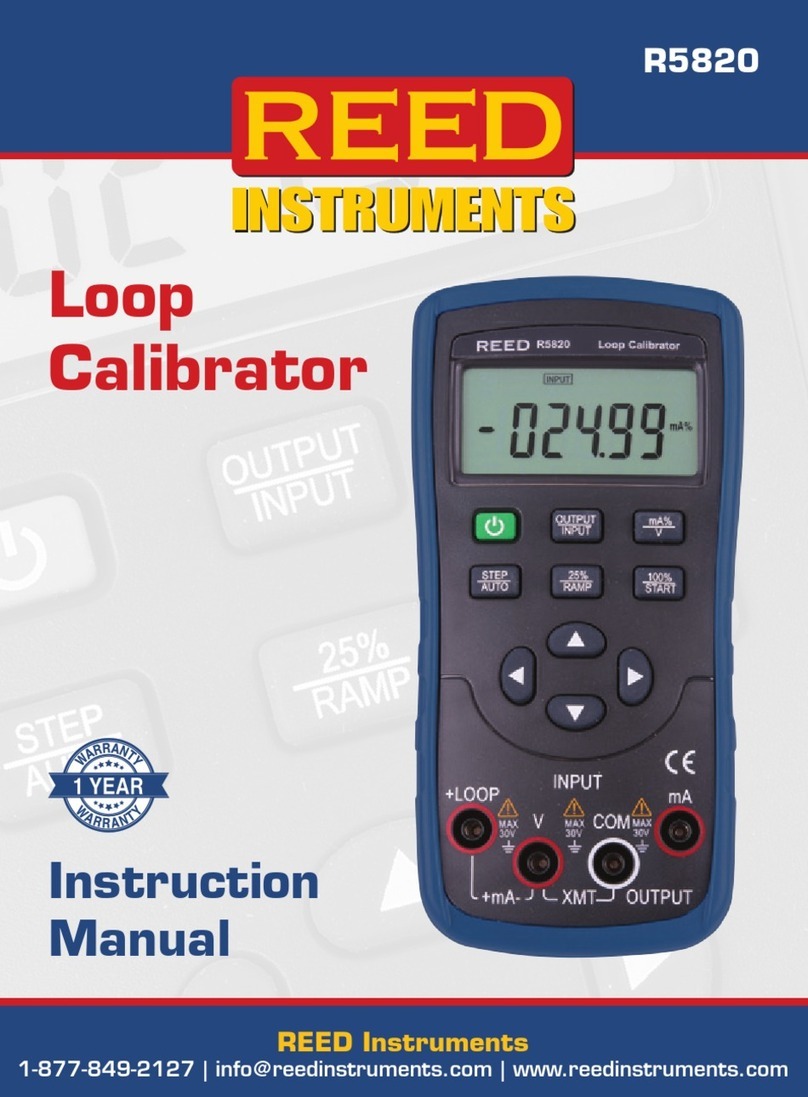
Reed Instruments
Reed Instruments R5820 instruction manual

Apera
Apera 2301T-F user manual

Agilent Technologies
Agilent Technologies 85032F User's and service guide

Hanna Instruments
Hanna Instruments HI 38035 instruction manual

Tektronix
Tektronix DPO4000 Series user manual
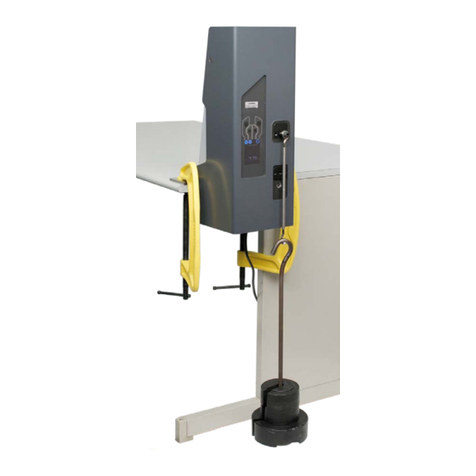
Mecmesin
Mecmesin CrimpTest-1 kN manual

